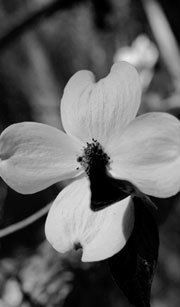 |
||
 |
||

 |
• HOME • GENERAL STORE • NATURAL HERITAGE • HISTORY, CULTURE & CRAFTSMANSHIP |
||||
|
Natural Heritage
• Trees & Shrubs of the Ozarks |
|||||
| Trees & Shrubs Index • Oak • Hickory • Walnut • Catalpa • Loblolly Pine • Red cedar • Elderberry • Sumac • Sassafras • Persimmon • Osage-orange • Mulberry • Witch Hazel • Sarvisberry • Dogwood • Redbud • Crape Myrtle • Mimosa Natural Heritage Index • Fishing • Hunting • Camping • Conservation • Bass Pro Blog • Hills & Hollows • Rivers & Lakes • Springs • Caves • Rocks & Fossils • Trees & Shrubs • Plants & Herbs • Hill Critters • Flyin' Critters • Water Critters • Snakes & Such • Forgotten Critters |
|||

Growing wild across the Missouri and Arkansas hills, the persimmon is a welcome, if unplanted, fruit tree; a gatherer of ’possums; and, tradition has it, a very old weather predictor.
Before autumn brings a good, hard frost, persimmon fruit (resembling small pumpkins) is hard and a light-greenish yellow. The alum content of the persimmon is also so high, if you taste one, you might be puckered up for a week.
Frost changes all that. The alum is replaced with sugar and the texture of the fruit turns pulpy. The blush from the fruit is gone and the color goes to a rich orange-red.
The persimmons are ready to pick, or pick up should they fall to the ground.
The fruit itself will not keep long and recipes for persimmon pudding, persimmon butter, persimmon bread abound.
The seeds — encased in membrane — have been used to divine the weather for generations.
Carefully split the seeds, separating both wide halves, and look at the designs.
Is it a spoon? A knife? A fork?
What you see is said to determine the onrushing winter. A spoon? Winter snows. A knife? Winter winds? A fork? A mild winter, indicating plenty to eat.
Joshua Heston, editor
October 22, 2009
_______
Persimmon (Diospyros virginiana)
Size: 30-50 feet tall; leaves 2.5 - 6 inches long.
What to look for: leaves oval, shiny, dark green above, pale green and hairy below; flowers green-yellow; fruit fleshy.
Habitat: bottomlands, old fields, hedgerows.
— page 311, Wernett, Susan J., et al. North American Wildlife. The Reader's Digest Association, Inc., 1986.
_______
Persimmon photo plates
All photo credits: J. • SOTO © Archive. 10/20/09 • rural Christian County, Missouri
From Vance Randolph...
I have known hillfolk who more or less seriously forecast the weather for many months in advance by splitting open a persimmon seed in autumn. If the little growth at one end, between the two halves of the seed, looks like a spoon, it means that the next summer will be moist and warm, and that everybody will raise bumper crops. But if the seed carries a tiny knife and fork, instead of a spoon, the growing season will be unsatisfactory and many crops will fail.
— page 20, Ozark Superstitions by Vance Randolph, Columbia University Press 1947




October 22, 2009